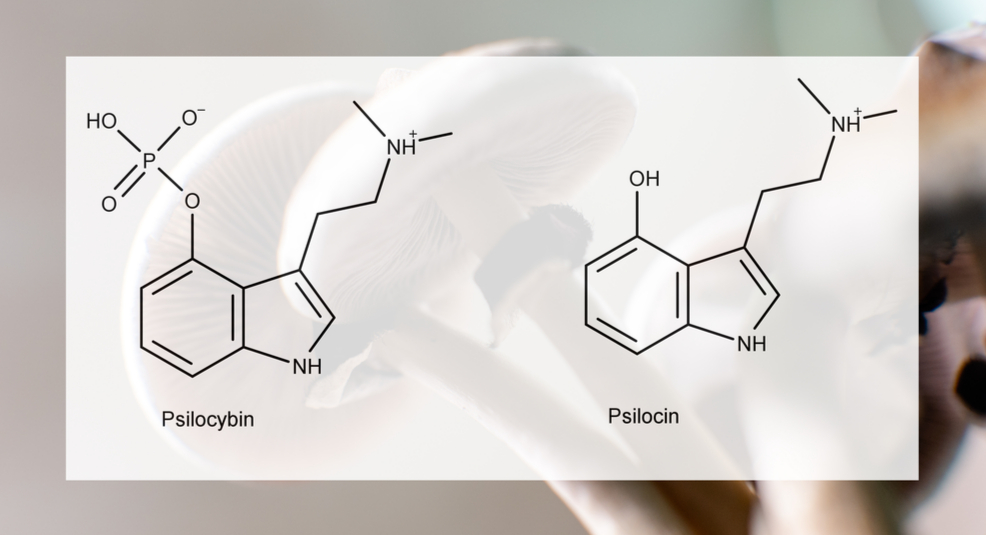Mycology: The Study Of Fungi
Digestion Chain
Psilocybin and psilocin are the two primary psychedelic compounds found in Psilocybe mushrooms. Each compound has an important role in the digestion chain. By working together through a chemical process called dephosphorylation, these compounds create the psychedelic effects of the psilocybin mushroom experience.
After the mushrooms are ingested, psilocybin (4-PO-DMT) is converted to psilocin (4-HO-DMT) through dephosphorylation. During this chemical process, the phosphate group on psilocybin is removed, producing the molecule psilocin. This can occur in the body in one of two ways: the stomach can be a favorable acidic environment for dephosphorylation; or the alkaline phosphates and other non-specific enzymes esterase dephosphorylation of psilocybin in the kidneys, intestines, and blood.

Once psilocybin converts to psilocin, it becomes more fat soluble, allowing the body to metabolize and absorb it into the intestines more efficiently. As psilocin is distributed throughout the bloodstream, it is able to cross the blood-brain barrier and induce its psychedelic effects.
Once fully digested, nearly 80% of metabolized psilocybin gets excreted in the urine as a psilocin-derived compound called psilocin-O-glucuronide. No detectable amount is measurable within the body after 1 to 7 days.